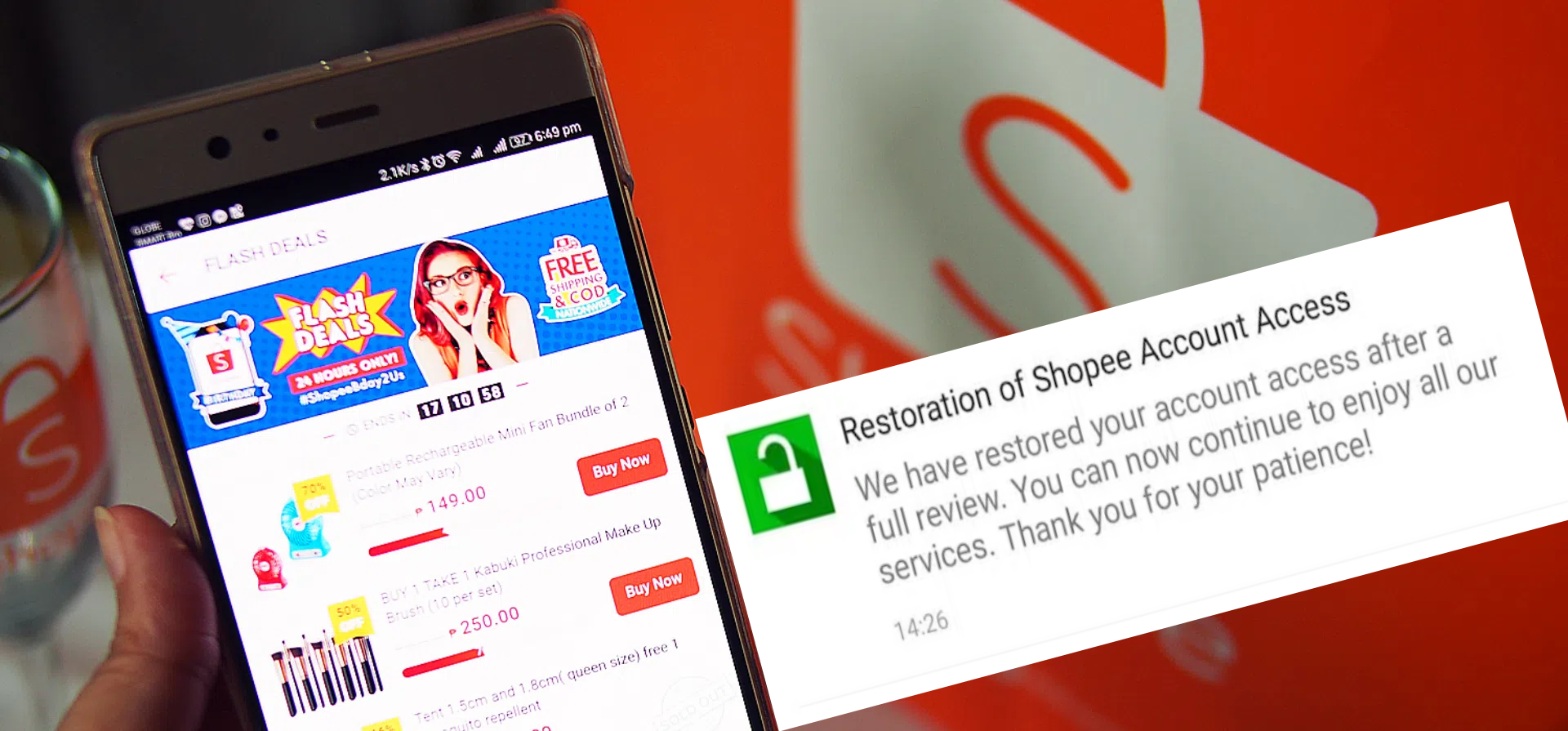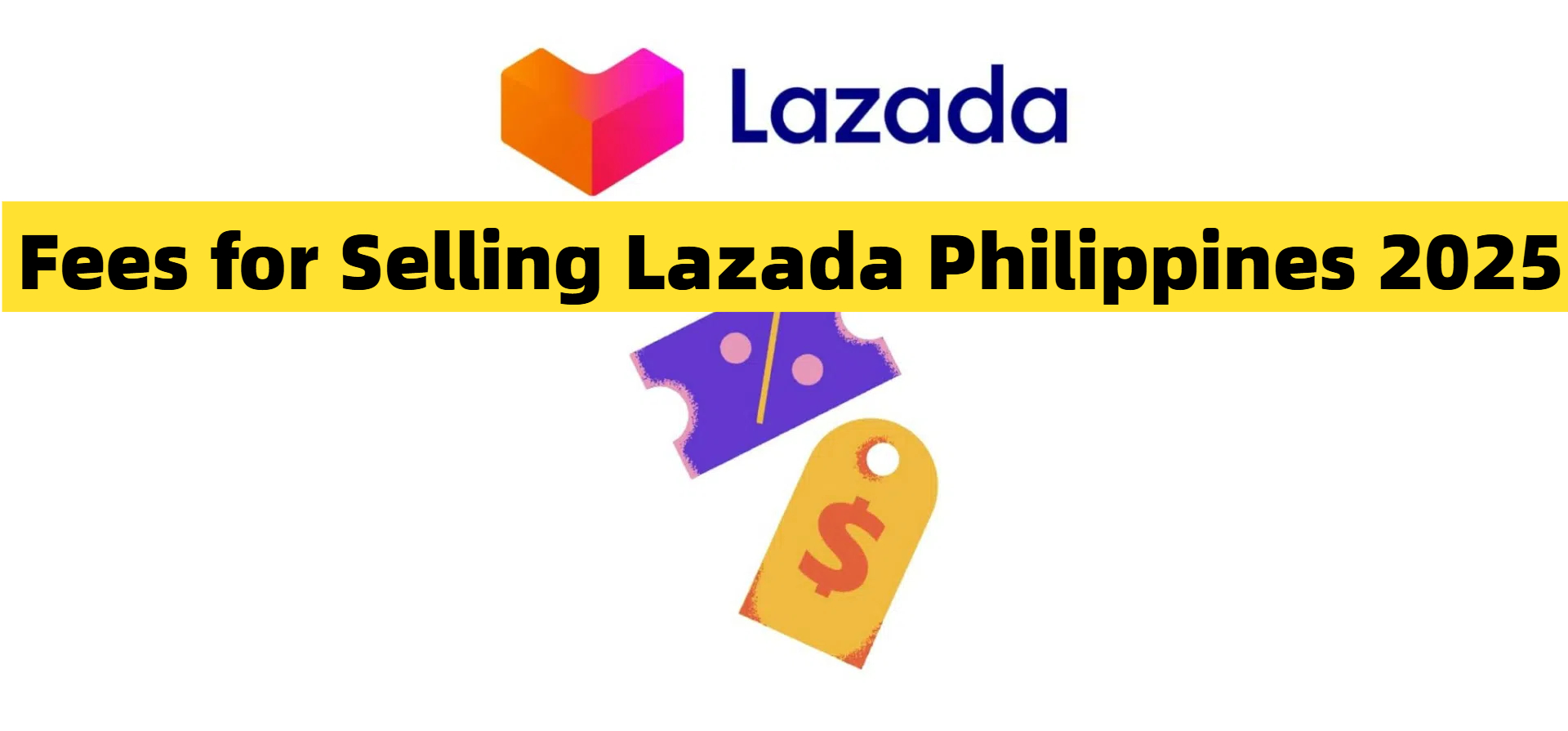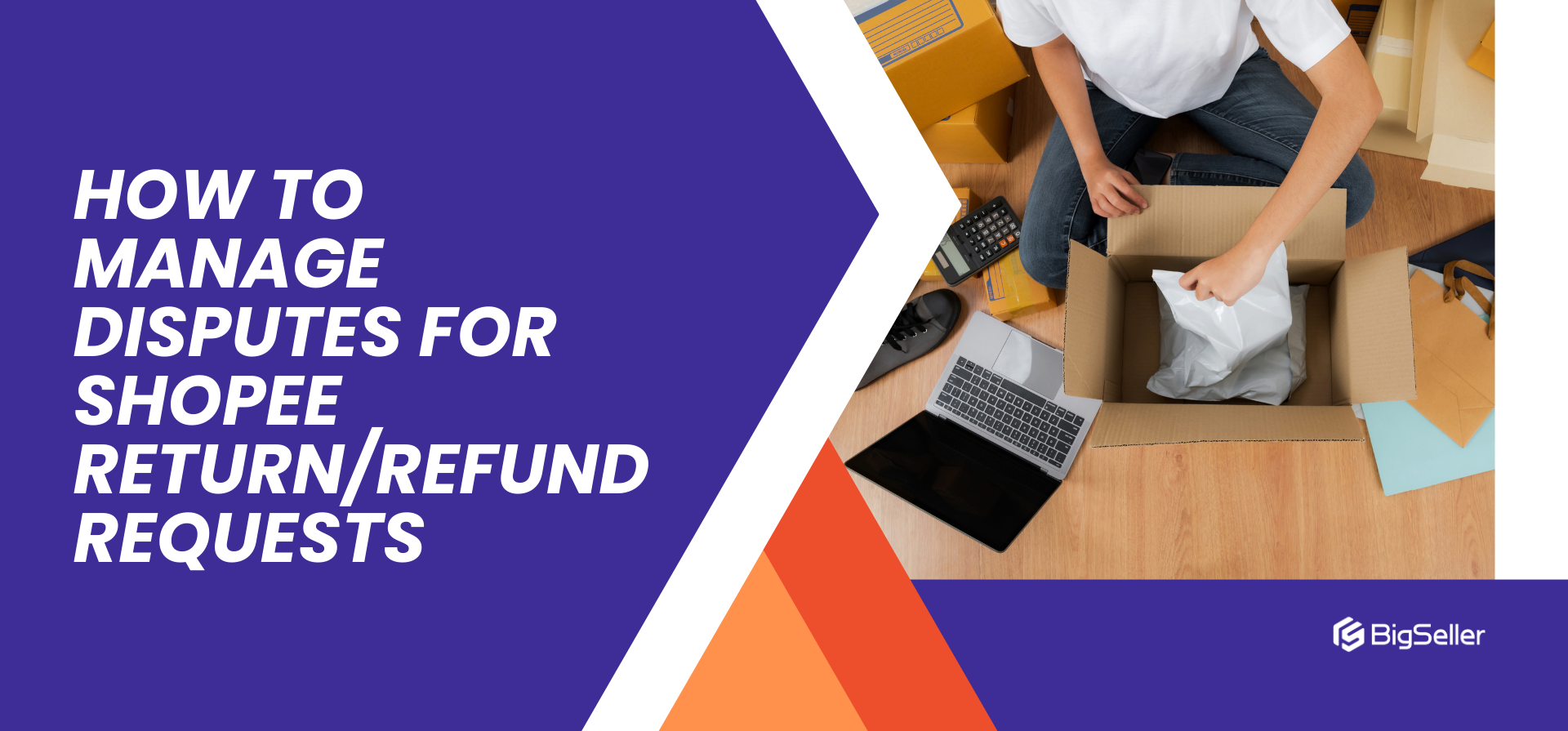Tips for E-Commerce Sellers: How to Calculate Online Store Sales?
Jayson 19 Aug 2025 08:42ENCopy link & title
Accurate sales calculations let you know what’s actually coming into the business, which orders are profitable, and whether promos or platform campaigns move the needle.
Below are simple formulas, real-world examples, and local notes to help you calculate sales, profit, and ROI for your online store in the Philippines. Whether you're a small business owner or an entrepreneur, the information provided will serve as a useful guide to better navigate the financial aspects of running an online retail business.
Gross Sales = Units Sold × List Price
Net Sales = Gross Sales − Discounts − Returns
Average Order Value (AOV) = Total Sales ÷ Number of Orders
Example: If you sold 120 items at ₱500/list price: Gross Sales = 120 × ₱500 = ₱60,000. If discounts and returns total ₱3,000, Net Sales = ₱57,000.
For the Philippines, common benchmark AOVs are useful to compare performance — industry data often cites an AOV near US$65 for PH e-commerce in recent benchmarks. Use AOV to forecast revenue from expected orders.
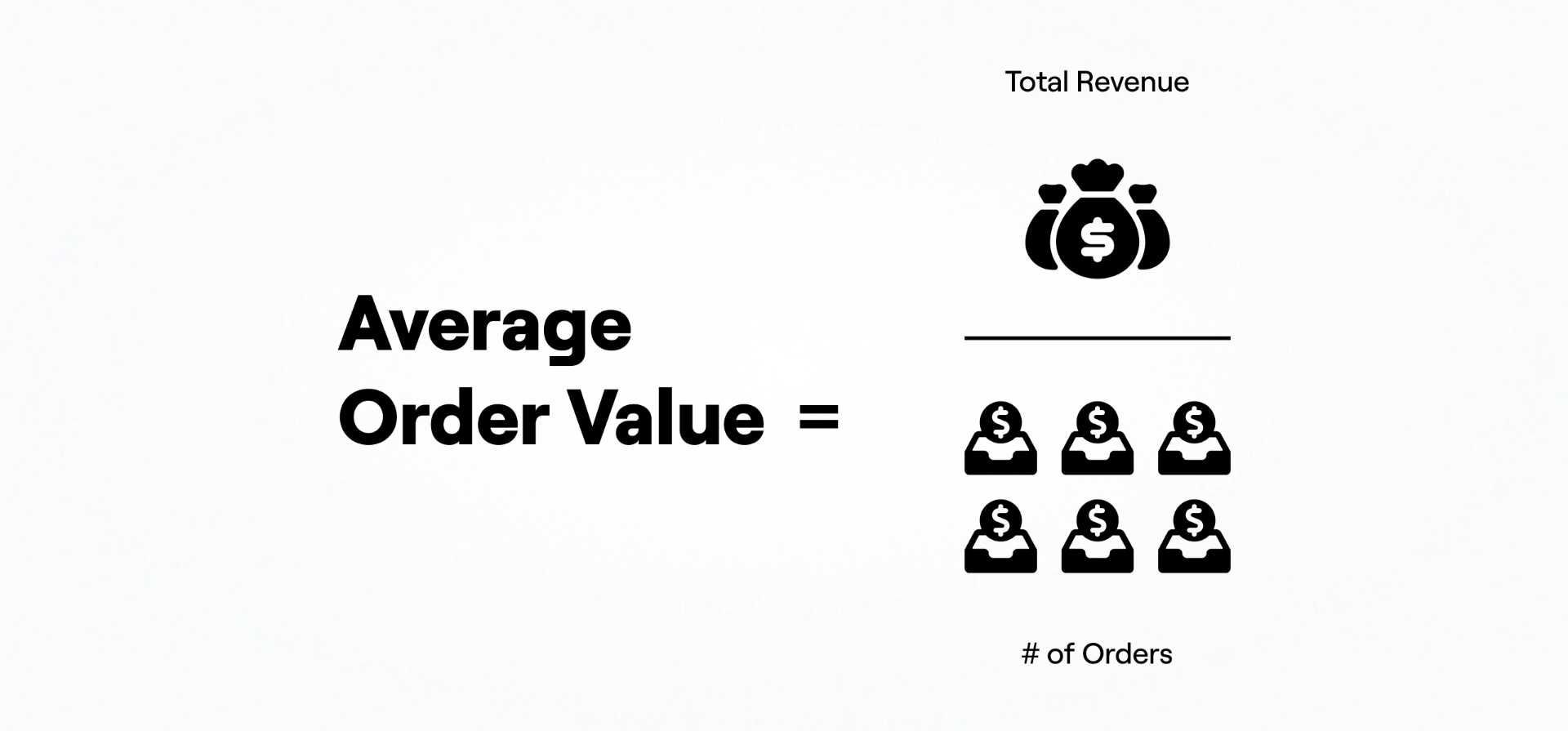
To estimate sales from visitors or traffic:
Estimated Orders = Visitors × Conversion Rate
Estimated Revenue = Estimated Orders × AOV
Practical example:
If CR = 2.4% → Orders = 1,000 × 0.024 = 24 orders. Revenue ≈ 24 × US$65 = US$1,560. This conversion benchmark is consistent with common e-commerce averages and should be refined using your own analytics.

Net revenue per order must subtract platform and operational costs:
Platform / Transaction Fees (marketplaces often charge a payment/transaction fee). In the Philippines many marketplaces use a transaction fee in the low single digits (for example, 2.24% transaction fee on completed orders for some platforms). Factor these per-order.
COGS (Cost of Goods Sold) — item purchase/manufacturing cost per unit.
Fulfillment & Shipping — actual courier fees and packaging.
Marketing Costs — ad spend attributed to each order.
Taxes / Regulatory Obligations — local VAT rules and BIR guidance can affect pricing and reporting; recent BIR and government rules on e-commerce and digital services are relevant for compliance.
Quick per-order profit formula:
Net Profit per order = AOV − (Platform fees + COGS + Shipping + Marketing per order + Tax share)
Check detailed 👉 Lazada 2025 Commision Fees
Gross Profit = Net Sales − COGS
Net Profit = Gross Profit − Operating Expenses (marketing, wages, fees, taxes)
ROI (for a campaign) = (Revenue − Cost) ÷ Cost × 100%
Example ROI: If a flash sale generated ₱50,000 revenue and you spent ₱10,000 in ads + ₱5,000 promo discounts + ₱3,000 extra fees (total cost ₱18,000), ROI = (50,000 − 18,000) ÷ 18,000 × 100% = 177.8%. Use ROI to decide whether to scale promotions. (Remember to include hidden costs like returns and post-sale support.)
A seller can have multiple revenue streams: Shopee, Lazada, TikTok Shop, Facebook/Instagram, and offline retail. Calculating sales and profitability for each channel—fees, return rates, conversion rates, and logistics vary by channel—is crucial.
However, if too many channels are involved, it will undoubtedly increase the seller's burden and affect the accuracy of the calculations. This is why multi-platform, multi-store sellers need BigSeller.
BigSeller has a complete Sales Analysis feature, which can collect statistics from multiple dimensions such as orders, profits, stores, SKUs, etc. The most important thing is that it can collect statistics on all related platforms and stores in one stop, without the need for sellers to manually collect statistics separately, and it supports exporting relevant profit reports at any time.

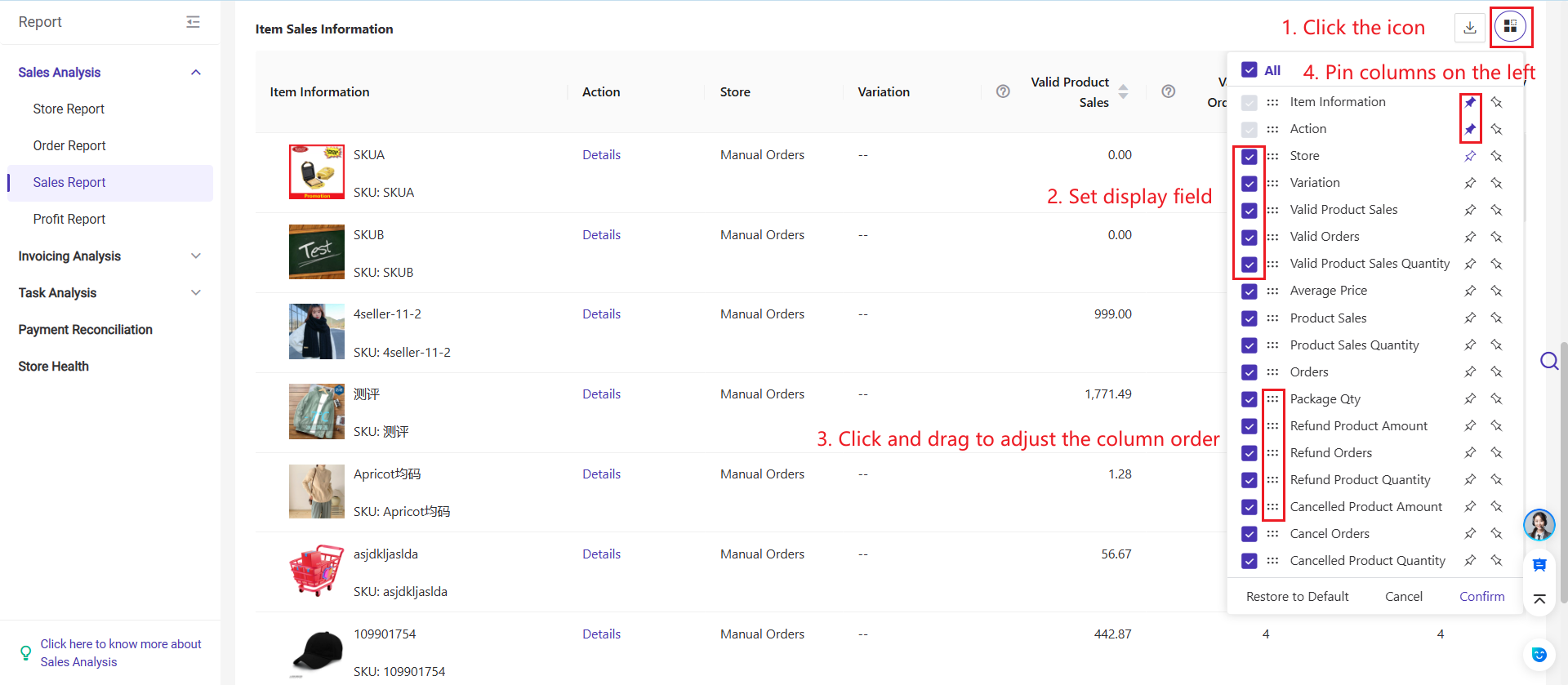
Check for more details👉 BigSeller Finance Dashboard
Below are simple formulas, real-world examples, and local notes to help you calculate sales, profit, and ROI for your online store in the Philippines. Whether you're a small business owner or an entrepreneur, the information provided will serve as a useful guide to better navigate the financial aspects of running an online retail business.
Vist our website to know more 👉 BigSeller ERP
1. Core Sales Formulas (the building blocks)
Gross Sales = Units Sold × List Price
Net Sales = Gross Sales − Discounts − Returns
Average Order Value (AOV) = Total Sales ÷ Number of Orders
Example: If you sold 120 items at ₱500/list price: Gross Sales = 120 × ₱500 = ₱60,000. If discounts and returns total ₱3,000, Net Sales = ₱57,000.
For the Philippines, common benchmark AOVs are useful to compare performance — industry data often cites an AOV near US$65 for PH e-commerce in recent benchmarks. Use AOV to forecast revenue from expected orders.

2. From Traffic to Revenue — Conversion Math
To estimate sales from visitors or traffic:
Estimated Orders = Visitors × Conversion Rate
Estimated Revenue = Estimated Orders × AOV
Practical example:
- Visitors in a promotion: 1,000
- Local benchmark conversion rate: ~2–3% (use your site/platform historic CR)
- AOV (benchmark): US$65 (≈ local AOV benchmark)
If CR = 2.4% → Orders = 1,000 × 0.024 = 24 orders. Revenue ≈ 24 × US$65 = US$1,560. This conversion benchmark is consistent with common e-commerce averages and should be refined using your own analytics.

3. Account for Platform Fees, Logistics, and Taxes (local essentials)
Net revenue per order must subtract platform and operational costs:
Platform / Transaction Fees (marketplaces often charge a payment/transaction fee). In the Philippines many marketplaces use a transaction fee in the low single digits (for example, 2.24% transaction fee on completed orders for some platforms). Factor these per-order.
COGS (Cost of Goods Sold) — item purchase/manufacturing cost per unit.
Fulfillment & Shipping — actual courier fees and packaging.
Marketing Costs — ad spend attributed to each order.
Taxes / Regulatory Obligations — local VAT rules and BIR guidance can affect pricing and reporting; recent BIR and government rules on e-commerce and digital services are relevant for compliance.
Quick per-order profit formula:
Net Profit per order = AOV − (Platform fees + COGS + Shipping + Marketing per order + Tax share)
Check detailed 👉 Lazada 2025 Commision Fees
4. Profit, Net Profit and ROI — What to Monitor
Gross Profit = Net Sales − COGS
Net Profit = Gross Profit − Operating Expenses (marketing, wages, fees, taxes)
ROI (for a campaign) = (Revenue − Cost) ÷ Cost × 100%
Example ROI: If a flash sale generated ₱50,000 revenue and you spent ₱10,000 in ads + ₱5,000 promo discounts + ₱3,000 extra fees (total cost ₱18,000), ROI = (50,000 − 18,000) ÷ 18,000 × 100% = 177.8%. Use ROI to decide whether to scale promotions. (Remember to include hidden costs like returns and post-sale support.)
5. Conclusion
A seller can have multiple revenue streams: Shopee, Lazada, TikTok Shop, Facebook/Instagram, and offline retail. Calculating sales and profitability for each channel—fees, return rates, conversion rates, and logistics vary by channel—is crucial.
However, if too many channels are involved, it will undoubtedly increase the seller's burden and affect the accuracy of the calculations. This is why multi-platform, multi-store sellers need BigSeller.
BigSeller has a complete Sales Analysis feature, which can collect statistics from multiple dimensions such as orders, profits, stores, SKUs, etc. The most important thing is that it can collect statistics on all related platforms and stores in one stop, without the need for sellers to manually collect statistics separately, and it supports exporting relevant profit reports at any time.


Check for more details👉 BigSeller Finance Dashboard
BigSeller is the ultimate, FREE e-commerce platform for Southeast Asian sellers, designed to supercharge your business. Streamline everything in one place—from product listings and order processing to inventory management, financial tracking, and automated operations. Click Here to Register BigSeller For Free!👈
BigSeller-Blog Senior Writer: Jayson
Sir Jayson has worked in well-known e-commerce companies such as Shopee and TikTok Shop, helping hundreds of sellers to deepen their e-commerce industry, expand their business, and eventually become high-quality sellers.
